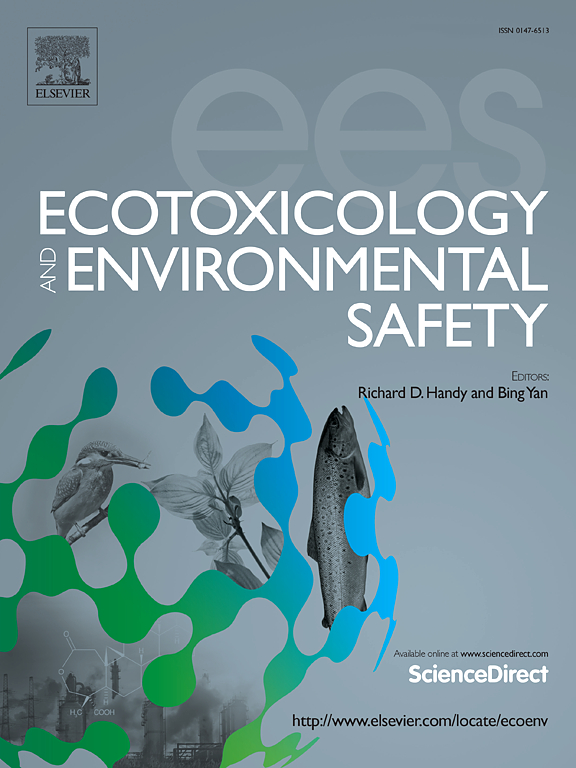接触汞和多氯联苯影响澳大利亚海鸟(阿登纳海鸟)的甲状腺功能。
IF 6.2
2区 环境科学与生态学
Q1 ENVIRONMENTAL SCIENCES
引用次数: 0
摘要
作为海洋环境中的顶级捕食者,海鸟可能暴露于高水平的持久性污染物中,这些污染物可以进行生物积累和生物放大,使这些捕食者成为生态系统健康的优秀指标。汞(Hg)和多氯联苯(pcb)通常存在于海洋环境中,已知会干扰野生动物的甲状腺系统。本研究测定了雏鸟和成年貂鹱(Ardenna carneipes)中多氯联苯和汞的浓度,并研究了它们与甲状腺素(T4)和三碘甲状腺原氨酸(T3)水平的关系。分别在羽毛和红细胞中测量汞和多氯联苯。结果表明,成年海鸥体内的汞和多氯联苯含量高于雏鸟。在两个年龄组中,汞/多氯联苯身体负荷与循环甲状腺激素浓度呈负相关。然而,其中一些相关性在统计上并不显著。本研究提供了这些污染物与成鸟和幼鸟甲状腺功能的经验数据集。这是朝着更好地了解汞和多氯联苯对海鸟健康构成的威胁迈出的重要一步。本文章由计算机程序翻译,如有差异,请以英文原文为准。
Exposure to mercury and polychlorinated biphenyls affects the thyroid function of an Australian seabird (Ardenna carneipes)
As top predators in the marine environment, seabirds can be exposed to high levels of persistent pollutants that can bioaccumulate and biomagnify making these predators excellent indicators of ecosystem health. Commonly found in the marine environment, mercury (Hg) and polychlorinated biphenyls (PCBs) are known to interfere with the thyroid system in wildlife. This study quantified PCBs and Hg concentrations and investigated the relationship with thyroxine (T4) and triiodothyronine (T3) levels, in fledgling and adult sable shearwaters (Ardenna carneipes). Hg and PCBs were measured in feathers and red blood cells, respectively. The results indicate Hg and PCBs were more abundant in adult shearwaters than in fledglings. Negative associations were found between Hg/PCB body burdens and circulating thyroid hormone concentrations in both age categories. However, some of these correlations were not statistically significant. This study presents an empirical dataset of these contaminants and the thyroid function of adult and juvenile birds. This is a significant step towards better understanding the threat posed by Hg and PCBs to the health of seabirds.
求助全文
通过发布文献求助,成功后即可免费获取论文全文。
去求助
来源期刊
CiteScore
12.10
自引率
5.90%
发文量
1234
审稿时长
88 days
期刊介绍:
Ecotoxicology and Environmental Safety is a multi-disciplinary journal that focuses on understanding the exposure and effects of environmental contamination on organisms including human health. The scope of the journal covers three main themes. The topics within these themes, indicated below, include (but are not limited to) the following: Ecotoxicology、Environmental Chemistry、Environmental Safety etc.

 求助内容:
求助内容: 应助结果提醒方式:
应助结果提醒方式:


